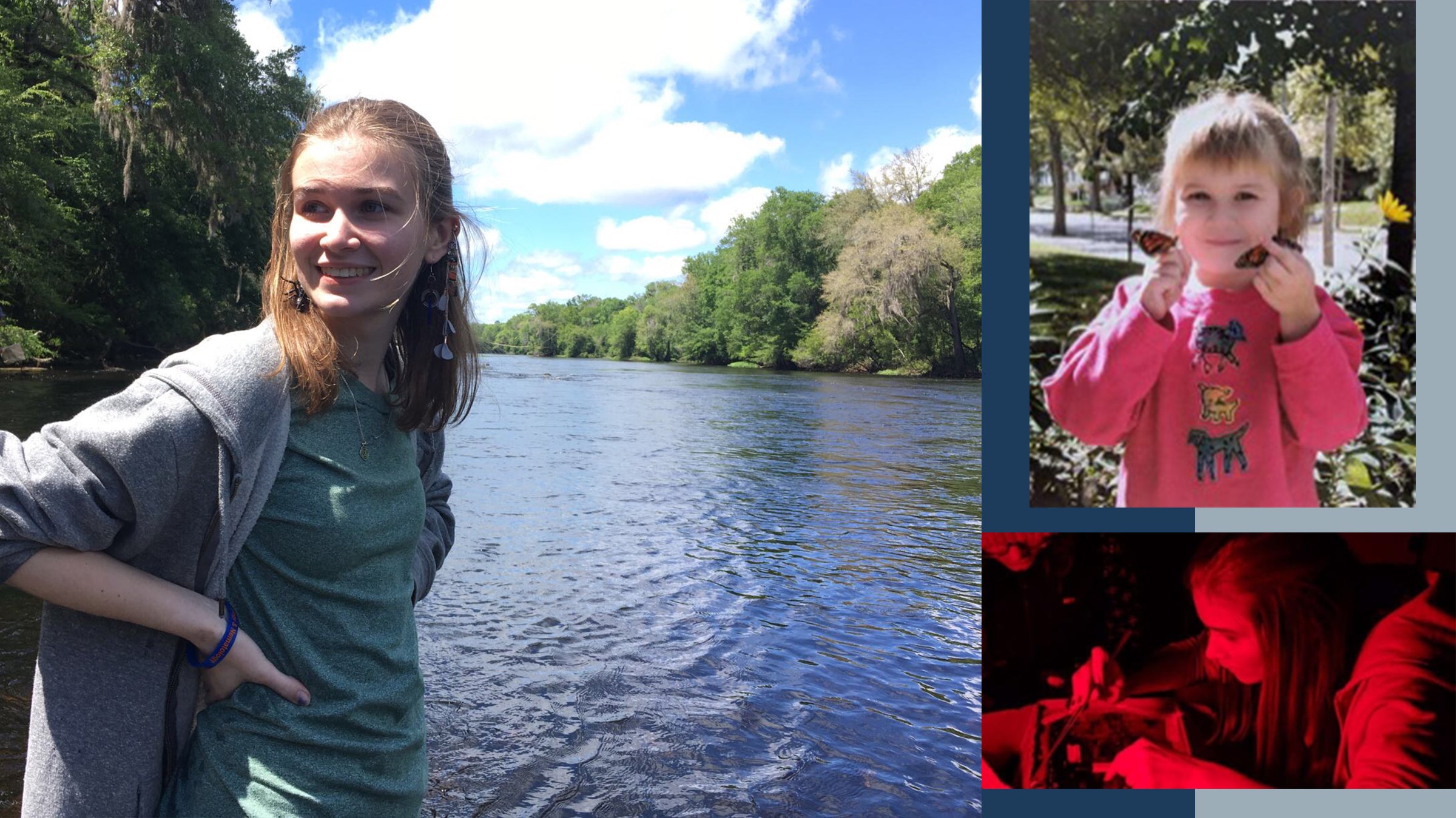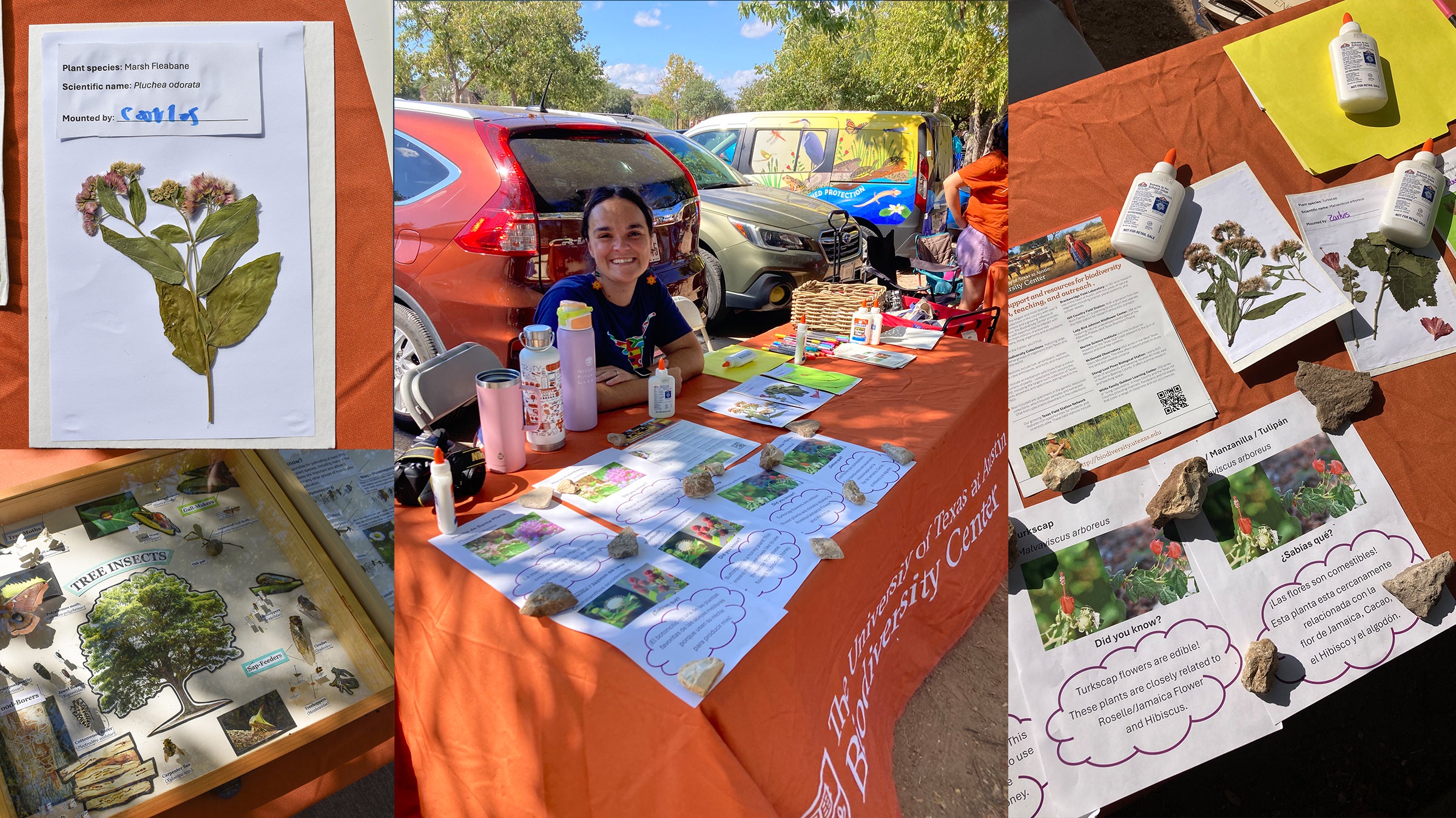
Scuba diving to conduct lobster, grouper, and conch surveys in The Bahamas.
Philip Souza is one of our 2022 Stengl-Wyer Fellows. He is a Ph.D. candidate in the Simon Brandl - Fish and Functions Lab where he studies estuarine soundscapes. Philip's path into his research focus is fascinating, and he shares his story below.
Tell us where you came from before UT, and what you studied then?
I came from Massachusetts by way of Miami, and I’ve worn many hats along the way. I got my undergraduate degree in Marine Science from Boston University. After graduating, I worked at Mote Marine Lab as an intern, studying the electrosensory systems of baby sharks. I then accepted a job as an at-sea monitor in New England. There, I went out to sea for up to 14 days to collect catch and discard data on commercial fishing vessels. I decided to go back to school and obtained a master’s degree from the University of Miami. At UM, I studied the queen conch population structure in a remote part of The Bahamas. After graduating, I worked at NOAA (National Oceanic and Atmospheric Administration), implementing economic surveys for the South East for-hire fisheries sector. I even worked in road construction for a short time!
What got you interested in studying estuarine soundscapes?
I joke that I got into the field of bioacoustics because I love fish and consider myself a good listener. The truth, however, is that I sort of fell into the field. I initially planned to use active acoustics (i.e., SONAR) to study fish spawning aggregations in more tropical parts of the world. I started recording the sounds of our local estuary during the first year of my Ph.D. and was blown away by how vibrant the marine soundscapes (i.e., collection of sounds emanating from the environment) were – the ubiquitous snap, crackle, and pop of snapping shrimp, the adorable chorus of gulf toadfish ‘boatwhistles’ on oyster reefs in the spring, and the booming knocks of large black drum during their spawning season in the late winter and early spring. I was hooked (pun intended) and wanted to learn more about the sounds and what they could tell us about the health of our local estuaries.

Holding a black drum (Pogonias cromis), one of the sound-producing fishes found in Texas estuaries
Does Texas present a unique situation, challenge or benefit for your research?
I work in the Brandl lab at the University of Texas Marine Science Institute (UTMSI) in Port Aransas, TX. UTMSI is stationed next to the Mission-Aransas Estuary, a highly-productive system teaming with vocal marine life (e.g., dolphins and soniferous fishes). Working at UT presents a unique situation as I can study these biological sounds in a dynamic and exciting system. Many of the sound-producing fishes belong to the family Sciaenidae and form the basis of important recreational fisheries. Texans and the people who visit the coastal bend LOVE fishing and care deeply about preserving their natural resources. Thus, I’ve received a lot of support from residents and local wildlife agencies who believe this work can play a critical role in preserving local biodiversity and maintaining healthy fish populations. The support has greatly benefited my work and inspired me throughout my time at UT.
How will being a Stengl-Wyer Fellow help advance your work?
Being a Stengl-Wyer Fellow will afford me the resources to continue my acoustic research and the platform to maximize the impact of the work. Over the next year, I hope to compile an exhaustive library of marine animal sounds in the Mission-Aransas Estuary. This work will add to the global library of marine sounds, which allows researchers to identify which species are vocalizing at their study sites, and to explore trends in the biodiversity of sound-producing animals through time. Additionally, I’m assessing the utility of passive acoustics for monitoring the health of oyster reef communities following restoration efforts and disturbance events. The hope is to pass on these monitoring tools to local researchers and wildlife agencies to address their own research and management needs well into the future. Being a UT Stengl-Wyer Fellow will allow me to reach this target audience and help preserve Texas’ natural resources.

Surveying lobster.
Where do you see your research agenda heading after UT?
A long-term goal of mine is to conduct passive acoustic research back home in New England. As in Texas, some of the most iconic and commercially important fishes in New England are chatty. Atlantic cod and haddock, for example, vocalize during their spawning seasons. I would like to use these sounds to monitor their distributions and spawning activity during the coming decades. It would be incredibly rewarding to play even a small role in the conservation of these species, and it would bring my research journey full circle. More generally, I want to continue to add to the global library of marine sounds by recording and identifying fish vocalizations all over the world. I’m also very interested in using passive acoustics to monitor the ecological condition of target sites through time. The idea is that healthy habitats contain more abundant and diverse communities than degraded habitats. As such, soundscapes at healthy sites should be louder and more complex than those at degraded sites. I’d like to continue adding to the growing body of work on the subject to see if we really can track habitat and community health through time simply by listening in.
Read more about Philip's research in this September 2023 article: Heartbeat of the Estuary



